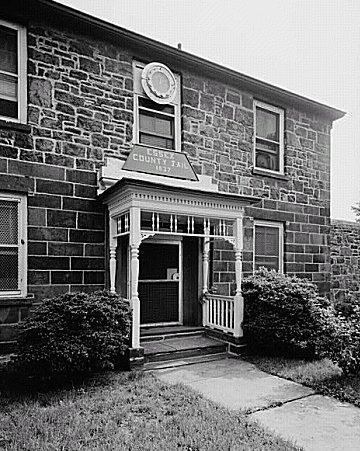Area 1.5 acres (0.61 ha) Architect John Haviland NRHP Reference # 91001366 | Built 1837 Architectural style Greek Revival | |
 | ||
Location Corner of Newark and New Streets, Newark, New Jersey | ||
Essex County Jail is a jail located in the University Heights section of Newark, Essex County, New Jersey, United States, and was added to the National Register of Historic Places on September 3, 1991. The jail was abandoned in 1970 when a new county jail was built. The jail is Essex County's oldest public building. The grounds are located adjacent to the Norfolk Street station of the Newark Light Rail.
Contents
History
The original building was designed by architect John Haviland and was built in 1837 at the corner of Newark and New Streets. John Haviland was an established prison architect at the time who was most notable for Eastern State Penitentiary. The Morris Canal ran adjacent to the jail and formed the back of the property line. When the building was first built it was known as the Newark Street Jail. The jail was built to replace an earlier structure that was located at the corner of Broad and Walnut Streets and is the present site of the Grace Episcopal Church. The jail consisted of a two story square building built of brick and local brownstone in the Greek Revival style. In 1890, the original building was expanded with multiple additions increasing the number of prison cells up to 300. The building was also updated to include running water and toilet facilities in each cell. The building served as Essex County's main jail until 1970 when a new jail was built. In 1991, scenes for the film Malcolm X were shot at the jail.
Current
The building was severely damaged by fire in 2001. A new science park is planned for the site. The design called for demolition of the remaining parts of former jail, but the city's landmark's committee, which seeks to have it restored, rejected the plan in 2010. The jail is rapidly decaying and many sections have already fallen down. In particular, The Wardens House, which dates from 1837, has collapsed due to lack of maintenance. Other sections will have to be demolished if the prison is ever rehabilitated.
